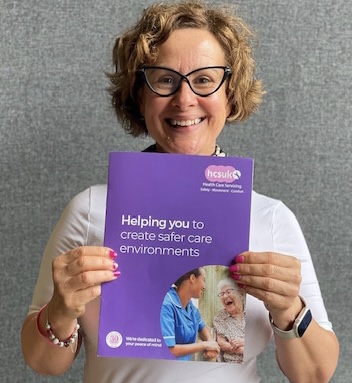How Regular Servicing of Your Care Equipment Means Safer Care Environments Too!
Providing safe and reliable care in your nursing or residential care homes is a top priority.
One critical aspect of this which can get overlooked is the regular servicing and maintenance of your care equipment.
Proper maintenance of medical devices and care equipment plays a significant role in creating safer care environments for both your residents and your care teams .
In our latest blog, we explore the various ways in which regular servicing can enhance safety in care settings, and its impact on outcomes for the people you support.
And if you haven’t already, why not download our FREE guide,’ Helping you to create safer care environments’ which is packed with really valuable information to help you understand your legal and regulatory obligations to comply with LOLER, Lifting Operations and Lifting Equipment Regulations 1998 (LOLER), PUWER, (Provision and Use of Work Equipment 1998) and CQC, Care Quality Commission Regulation 12, Safe Care and Treatment.

Ensuring Equipment Functionality
When your care equipment is regularly serviced and maintained it ensures that each device functions as it should. Malfunctioning equipment can lead to serious medical errors and accidents, jeopardising your residents’ safety and well-being.
By conducting routine checks and servicing, you can detect potential issues early on and address them promptly, reducing the risk of equipment failure during crucial procedures or treatments.
Reducing Accidents
A significant number of accidents in care homes are attributed to equipment failures or incorrect device settings, which can have severe consequences, ranging from treatment delays to life-threatening complications, including for example:
- falls from hoists due to faulty slings
- alternating air mattresses failing leading to worsening of pressure ulcers
- profiling beds failing to raise and lower confining residents to their beds
Regular servicing can detect and rectify any issues or malfunctions in the equipment’s performance, minimising the risks of accidents caused by technical issues.
Enhancing Accuracy and Precision
Some medical devices, such as patient weighing scales, are designed to deliver precise and accurate results, helping your care teams to make informed decisions about your residents’ care. Without regular servicing and calibration, the accuracy of these devices can deteriorate over time, leading to incorrect medication dosage and treatments.
Proper maintenance ensures that your equipment remains calibrated and functions with optimal precision, thus safeguarding residents’ well-being.
Prolonging Equipment Lifespan
Care equipment represents a substantial investment for your care home . Regular servicing not only ensures safer care environments but also extends the lifespan of your equipment. Timely maintenance helps prevent premature wear and tear, reducing the need for frequent replacements and ultimately saving costs.
Complying with Regulatory Standards
Your care home is subject to strict regulatory standards and guidelines to maintain staff and resident safety. Regular servicing of care equipment is a requirement to meet these standards and if your care homes prioritises compliance with your pre-planned maintenance of equipment, you are more likely to deliver higher-quality care, build trust with residents, relatives and CQC and have higher care ratings.
Supporting Staff Confidence
Your care teams need to have full confidence in the tools and equipment they use daily to support your residents. Regular servicing will give your people the assurance that the equipment they rely on is in good working condition, which will translate into greater job satisfaction, better performance, improved resident interactions, and a safer overall care environment.
Preventing Cross-Contamination
Some care equipment, such as pressure relieving mattresses, come into direct contact with residents and their bodily fluids.
If not appropriately maintained and sanitised, these devices can become a breeding ground for harmful pathogens, leading to infections and cross-contamination. Regular servicing including thorough cleaning and sterilisation, reduces the risk of infections and protects both your residents and your care workers.
In our FREE guide,’ Helping you to create safer care environments’ we help you understand your legal and regulatory obligations to comply with CQC, PUWER and MHRA regarding your mattress decontamination, you can download this here.
In summary regular servicing of your care equipment is essential for creating safer care environments in your care home .
By ensuring equipment functionality, reducing accidents, enhancing accuracy, prolonging equipment lifespan, complying with regulatory standards, supporting staff confidence, and preventing cross-contamination, you can significantly improve patient safety and overall care quality. Emphasizing the importance of routine maintenance will foster a culture of safety in your organisation, where resident well-being remains the top priority.



.jpg?width=352&name=IMG_0623-600x450%20(2).jpg)

.png?width=352&name=Untitled%20design%20-%202023-04-06T160801.454%20(1).png)